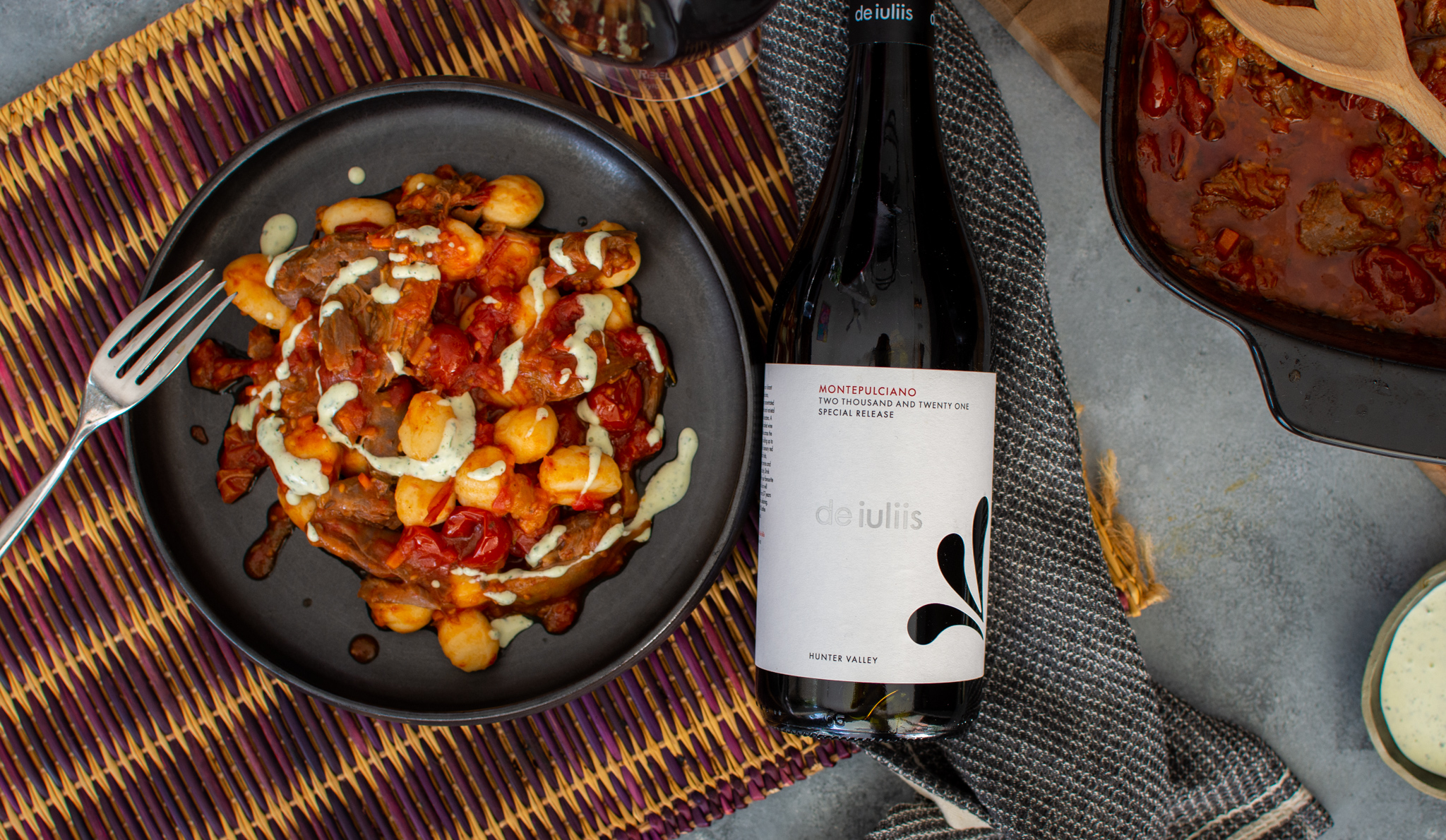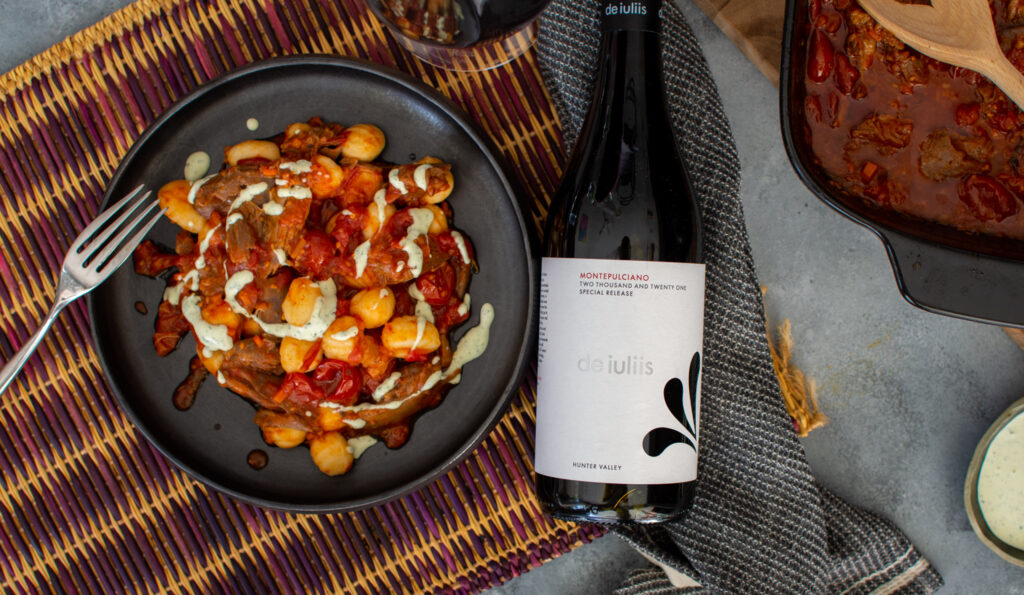
Montepulciano is an Italian red variety that makes beguiling wines and also causes confusion, in a way that only the Italians can. As well as the grape variety called Montepulciano, there is also a town called Montepulciano, where they make wine BUT they make their wine using Sangiovese grapes not Montepulciano grapes. So that if the label reads “Vino Nobile di Montepulciano”, then it is from that town and is made from Sangiovese. If however the label just says “Montepulciano” on it, it means that the wine is made from the Montepulciano grape variety, such as “Montepulciano d’Abruzzo”, meaning that it comes from hilly coastal region of Abruzzo in Central Italy. Also being a very old Italian variety, it has more synonyms than you can poke a stick at, which only adds to the confusion. Heck, I thought that the Italians having both a cheese and a grape variety called Pecorino was confusing enough, but this “takes the biscuit”, so to speak!
However here in Australia, where life is oh, so much simpler, if it says Montepulciano on the label it means that is actually made from the Montepulciano grape variety.
As Montepulciano (Monte) is often confused with Sangiovese in the vineyard, its origins are nebulous and often debated, but generally considered to be Tuscan in origin. What we know for sure is that it has been around for centuries and is native to Italy, where it is widely planted. Best estimates suggest that there are around 25,000 hectares of it planted across Italy. It is approved in twenty of the ninety-five official grape growing regions of Italy. If you grow a “non-approved” variety in any of the regions in Italy, you cannot label your wine as being DOC (Denominazione di Origine Controllata) and thus (normally) it sells for a lower price – the “Super Tuscan” wines being an exception.
As Monte ripens latish in the season it is not really suitable for the cooler, higher altitude grape growing areas of Northern Italy. It also doesn’t like high rainfall regions, as it has a tendency to crop heavily, therefore producing bigger, fatter, more watery berries with a higher juice-to-skin ratio, thus making wines lacking in the variety’s distinctive plummy, weighty flavours and ripe tannins. As a result, in the main/most important DOC of Abruzzo the yields are restricted to 14 tonnes to the hectare so as to ensure that the resultant wines aren’t to “watery” or wishy-washy. On the plus side, compared to other native Italian reds, it is deeply coloured, lower in acidity and its tannins aren’t as aggressive or “bitey” thereby making wines that are smoother and rounder in their youth than most other native Italians.
You need a “form guide” to sort out Italian Monte, as it is grown throughout the mountainous Abruzzo wine region. Around the southern end of the region the where the landscape flattens out and stretches down towards the Adriatic Sea, is where most of the Monte is grown on these flatter warmer areas – around three quarters of it. Here the variety produces “workhorse” or commercials wines, in a way similar to that of what warmer/hot areas do for Shiraz here. Then as one heads up into the mountains and away from the sea, the climate becomes cooler, the soil less fertile and the wines become darker, denser, deeper and much more concentrated. This is where the best Italian Monte’s are made.
So far the variety doesn’t seem to have “travelled well” with only small amounts being grown in California, Texas, Mexico, Türkiye and of course here in Australia. Here it has blossomed from around 20 producers in 2010 to there currently being 91 producers according to Darby Higgs font of varietal knowledge at www.vinodiversity.com
As with most varieties there are considerable differences in style depending on the climate of where the grapes are grown. Thus they range from big, rich, wide open wines in warm areas through to tight, austere and restrained in cooler climates such as the Granite Belt in Queensland and the King Valley in Victoria.
Ideally a Monte will be deeply coloured with a fragrant blackberry/red berry bouquet and flavours with maybe a hint of cloves, good, crisp acidity and strong, tight tannins which can appear to have hint of sweetness about them, but are not overpowering as they can be in most Italian red grape varieties. The two main styles are the Italian which is lighter (slightly) coloured, more closed-up, tight and very acidic/tannic in its youth. By contrast the Australian style is a deeper coloured, bigger more open bouquet and smoother more open flavours with a softer finish. That is Italian style, cooler climate or picked earlier Aussie style, warmer climate and/or picked later/ripper.
De Iuliis Hunter Valley Montepulciano 2022 is an appealing Italian style, making it an attractive food wine.
This variety will be very interesting to watch over the next few years as right now it is still early days for Monte here in Australia and as such some winemakers are still wrestling with which style to make – the tight, taut, restrained Italian style, or the more open, opulent, softer, Australian style.
Either way with the quality of wines, I’ll say “make mine a Monte please”!
Dan Traucki is a wine journalist and a wine industry consultant. You can contact Dan at dan@wineassist.com.au and read his wine blog Wine Assist here.


